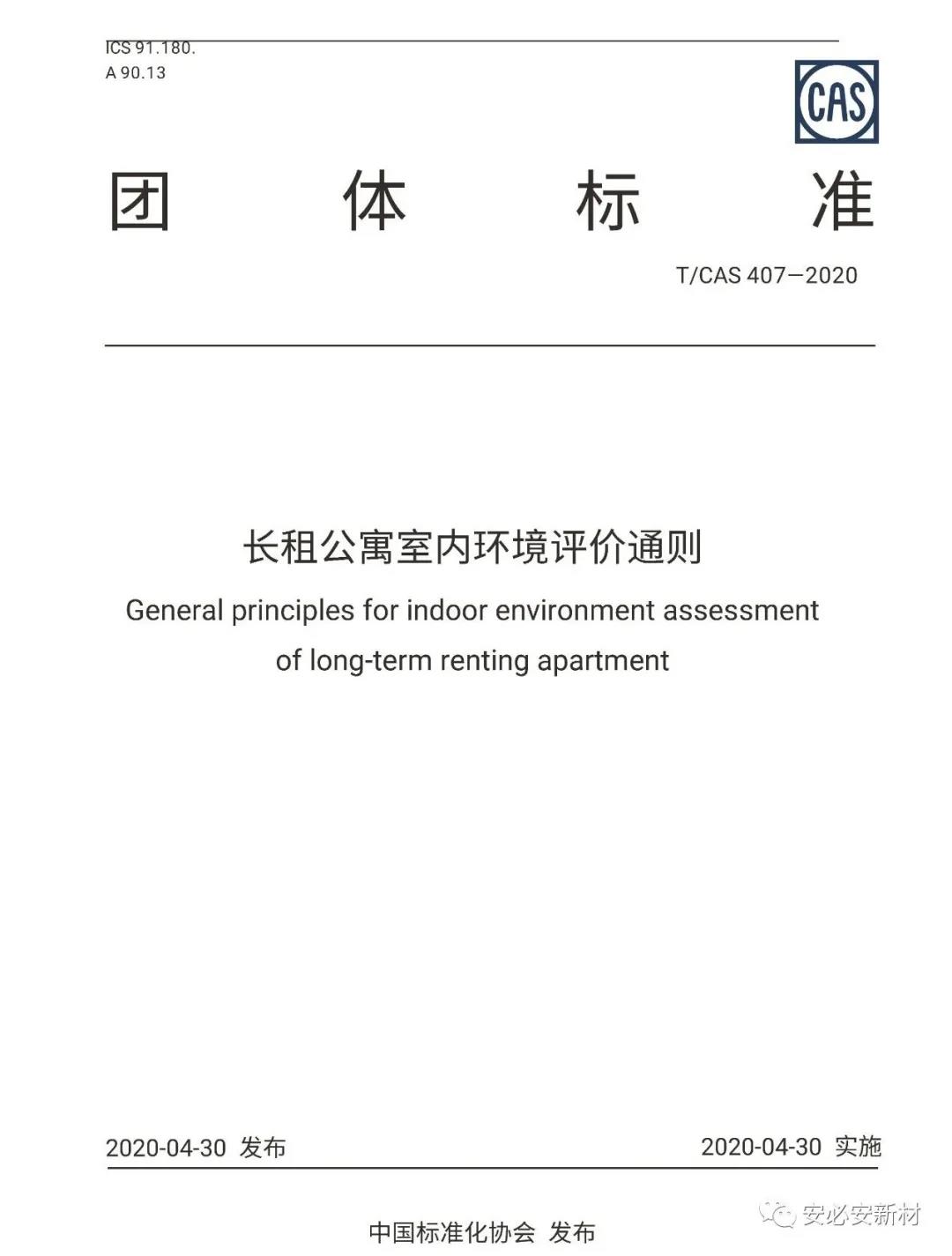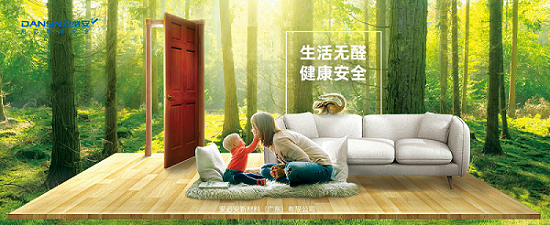Since the 19th CPC National Congress, especially since the State Council of the CPC Central Committee put forward the concept of 'houses are for living, not for speculation', and launched a series of housing reform measures such as 'renting, purchasing and lifting', the housing leasing market represented by long term rental apartments has been developing vigorously. Since the introduction of a series of housing reform measures such as 'rent and purchase', the housing rental market, represented by long term rental apartments, has been developing vigorously, which has played a positive role in solving the housing problems of urban residents and realizing the principle of 'letting all the people have a place to live.
Recently, the China Association for Standardization (CAS) officially released the group standard 'General Rules for Evaluation of Indoor Environment of Long-Term Rental Apartments' (Standard No. T/CAS 407-2020, hereinafter referred to as 'General Rules for Evaluation') for the long term rental apartment industry. The standard is led by China National Institute of Standardization (CNIS), China Construction Newspaper, National Center for Quality Supervision and Inspection of Furniture and Indoor Environment (NCQSIQ), China Academy of Building Standard Design (CABSD), China Quality Certification Center (CQC), Beijing Research Institute of Building Materials Inspection (BIBMI), and Shenzhen Chuangniu Information Technology Company Limited (SZCNITC) as a supplier of formaldehyde-free home solutions.

The standard puts forward the evaluation object, evaluation index, evaluation process and evaluation level of the indoor environment evaluation of long term rental apartments, and explicitly requires long term rental apartment enterprises participating in the indoor environment evaluation to meet the provisions of the relevant national or industry standards, which is applicable to the long term rental apartments (excluding the original owner's self-decoration of the house), the indoor decoration materials provided, the configuration of upholstered furniture or wooden furniture, and the Third-party evaluation or self-assessment of indoor air quality. Long-term rental apartment enterprises participating in the indoor environment evaluation shall all meet the provisions of relevant national or industry standards.
The indicator system is divided into three levels with due consideration to the trend of more environmentally friendly and healthier technology. Among them, the first-level indicators include: three items of indoor decoration materials, furniture and indoor air quality; the second-level indicators include: 16 items of water-resistant putty, etc.; and the third-level indicators include: the content of volatile organic compounds (TVOC), etc. (According to the actual situation of the flooring materials used, there are two choices for the third-level indicators, namely, 57 items and 58 items).
Focusing on the protection of consumers' physical and mental health, and based on the practical experience of leading enterprises in the housing leasing industry, and paying attention to the development trend of more environmentally friendly and healthy technologies, as well as the current status of control of indoor environmental quality by leading enterprises in the industry, the Evaluation General Principles focuses on the main substances in the indoor environment of the long-stay apartments that have a negative impact on the physical and mental health of the consumers, and designs the decorative measures to be carried out by the housing leasing enterprises for the whole building or complete set of houses. The indoor environment evaluation index system for housing leasing enterprises after decorating, configuring furniture and household appliances, proposing restriction requirements and grading the index values. The system is designed to guide long-stay apartment leasing enterprises to provide consumers with a greener and healthier living environment by selecting high-quality decorative materials and equipping them with appropriate furniture and household appliances, thus further enhancing the competitiveness of long-stay apartment leasing enterprises.
In recent years, AMBIEN has combined the cutting-edge technologies of inorganic material science and polymer material science to develop subversive and innovative products that combine the physical performance indexes required by different products of domestic green building materials and green household. A series of green home building materials, from building decoration to wooden doors, are made by bonding agricultural recyclables and wood fibers with polymer-modified inorganic gelling agents. In terms of household products, Ambian has developed a new type of composite structure of mineral core and rice husk/wood fiber as a substitute for traditional wood and man-made boards, and a new type of inorganic composite man-made boards made of rice husk which are formaldehyde-free, fireproof and waterproof; in terms of decorative materials, Ambian's new type of inorganic fiber flooring replaces the traditional wooden flooring or stone-plastic flooring, and the new type of inorganic fiber wall panels replaces the traditional bamboo and wood fiber wall panels and calcium silicate panels, which can substantially reduce the cost and improve the quality of the wall panels without any cost reduction. The new inorganic fiber wall panels replace traditional bamboo wood fiber wall panels and calcium silicate board wall panels. Ambion's innovative technology realizes the control of indoor formaldehyde and other harmful substances from the source, and creates a whole-house space with no formaldehyde, no benzene and low VOC for consumers.
